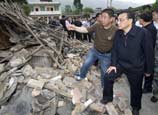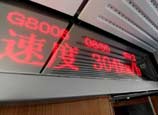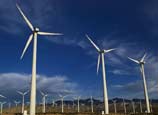
"Built into the title of this first survey exhibition of sound art in China is obviously a pun - RPM being a measure with which we describe the different speeds of a record turntable and different types of record formats, but it also refers to the revolutionary nature of modern Chinese society, and how unbelievably fast a pace it is changing at."
In Yao's own piece, Geophone Nanking (2005), audiences are invited to sit inside a large black box in complete darkness, listening to field recordings of Nanjing in surround sound. The work references the practice of "diting," or "earth-listening", employed by Chinese armies 2,000 years ago. A scout would sit inside a large pottery urn, buried deep underground, listening for the encroaching enemy.
Robert McVaugh, a professor of art and art history at Colgate, says the exhibition is the most ambitious art undertaking the university has tackled in recent memory.
"The range of artists that are involved, and the cutting-edge quality of the work itself, presents the potential to take us to a place we have never reached," McVaugh says.
Another piece in the exhibition is Buddha Machine (2005), by FM3, a collaboration between Zhang Jian and Christian Virant. Using cheap, mass-produced Buddhist prayer machines that have been reprogrammed to play the group's own sound clips, the work is a comment on superficial adherence to religion, Yao writes.
Shi says he believes the art form is experimental in a way that will ultimately prove its importance as a cultural medium in China. The fact that people can now use personal computers and smartphones to create art opens up a world of possibility, he says.
"What we're doing in China now is making up for our lack of tradition in this area," he says.
For audiences unfamiliar with the art form or with Chinese contemporary art, Yao writes: "What we can do now, is to lend our ears."

















 Baby born right after earthquake in SW China
Baby born right after earthquake in SW China


![]()
